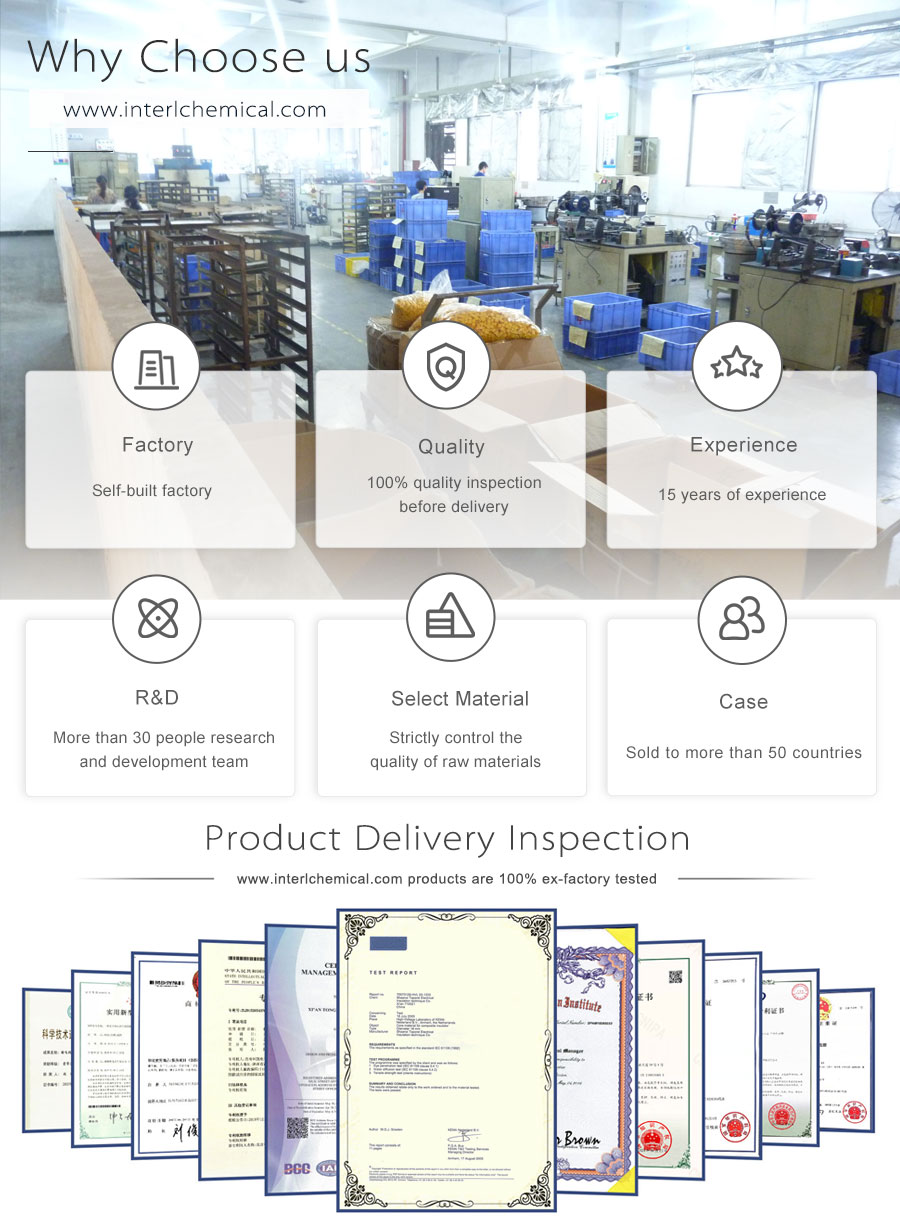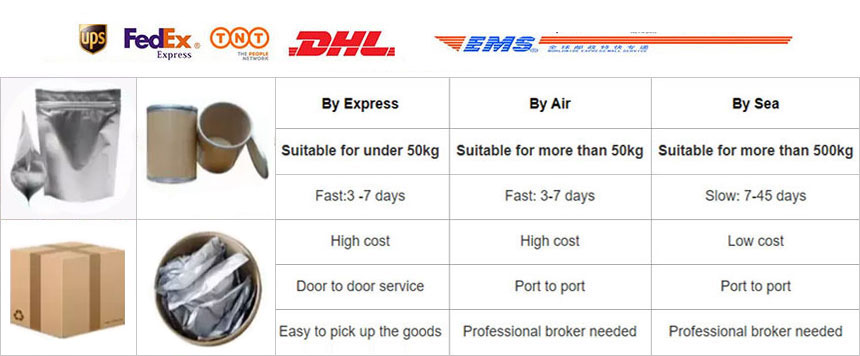Phone: 86-29-89601602
Mail: sales27@interlgroup.com
Add: Room 305 , 3/F , Haipai Decoration Office Building , Yudu Avenue , Yuncheng , Shanxi
Factory Supply Nicotinic acid Powder CAS 59-67-6 Raw Materials
Product Overview:
Nicotinic acid Powder, also known as vitamin B3, mainly found in animal viscera, muscle tissue, fruits, egg yolks also exist in trace amounts, is one of the 13 essential vitamins, belongs to the B vitamins, heat-resistant, can sublimate, is a water-soluble vitamin. Nicotinic acid can be converted into nicotinamide in the human body, which is involved in the synthesis of coenzyme I and coenzyme II, and plays an important role in lipid metabolism, oxidation of tissue respiration and anaerobic decomposition of sugars in the body.
Currently, Nicotinic acid CAS 59-67-6 is mainly used as feed additives, which can improve the utilization rate of feed protein, increase the milk production of dairy cows and the yield and quality of meat of fish, chicken, duck, cattle, sheep, etc. Nicotinic acid CAS 59-67-6 is also a widely used pharmaceutical intermediate, with which a variety of pharmaceuticals can be synthesized as raw materials, such as Nicotinic Acid CAS 59-67-6 is also a widely used pharmaceutical intermediate. In addition, Nicotinic acid Raw Materials also plays an irreplaceable role in the fields of luminescent materials, dyestuffs, electroplating industry and so on.
Factory Supply Nicotinic acid Powder CAS 59-67-6 Raw Materials Attributes
MF:C6H5NO2
MW: 123.11
EINECS:200-441-0
Specification:Nicotinic acid Powder
Sample:Nicotinic acid Powder
Brand: Nicotinic acid Powder
Appearance: White Powder
Storage: Cool Dry Place
Brand: Globalchemical
Shelf Life: 2 Years
Test Method: HPLC
Factory Supply Nicotinic acid Powder CAS 59-67-6 Raw Materials Details
Uses and synthesis of Nicotinic acid Powder
Nicotinic acid Raw Materials, also known as vitamin B3, mainly found in animal viscera, muscle tissue, fruits, egg yolks also exist in trace amounts, is one of the 13 essential vitamins, belongs to the B vitamins, heat-resistant, can sublimate, is a kind of water-soluble vitamins.Nicotinic acid Powder in the human body can be converted into Nicotinamide can be converted into nicotinamide in human body, which is involved in the synthesis of coenzyme Ⅰ and coenzyme Ⅱ, and plays an important role in lipid metabolism, oxidation of tissue respiration and anaerobic decomposition of sugar in the body.

At present, Nicotinic acid CAS 59-67-6 is mainly used as feed additives, which can improve the utilization rate of feed protein, milk production of dairy cows and meat production and quality of fish, chicken, duck, cattle, sheep and other livestock. Nicotinic acid is also a widely used pharmaceutical intermediates, with its raw materials, you can synthesize a variety of pharmaceuticals, such as Nicosamide and nicotinic acid inositol ester. In addition, Nicotinic acid CAS 59-67-6 also plays an irreplaceable role in luminescent materials, dyes, electroplating industry and other fields.
Nicotinic acid CAS 59-67-6 is also known as Vitamin B3, or Vitamin PP, is heat-resistant and can sublimate. Nicotinic acid is also known as nicotinic acid and anti-mange factor. In the human body it also includes its derivative niacinamide or nicotinamide.Nicotinic acid Powder is one of the 13 essential vitamins, a water-soluble vitamin belonging to the vitamin B group.
Nicotinic acid Raw Materials is a precursor of the coenzymes NAD and NADP. It is widely distributed in nature and is found in large quantities in liver, fish, yeast and cereals. Dietary deficiencies have been associated with pellagra.Nicotinic acid Raw Materials is also used in niacinamide or other derivatives with niacin bioactivity. Vitamins (enzyme cofactors).
Applications / Functions of Nicotinic Acid Powder
- Nicotinic acid Raw Materials are vitamins, together with nicotinamide, known as vitamin PP, used against pellagra, also used as blood expanders, and used in large quantities as additives in food and feed. As a pharmaceutical intermediate, it is used in the production of isoniazid, nicotinamide, nicosamide and inositol nicotinate.
- Nicotinic acid Powder is an important hydrogen transporter and anti-mange factor in the body tissue, it has the effect of maintaining the health of skin and nerves and promoting digestion. It can be used to fortify cereals and their products at 40-50mg/kg; 30-40mg/kg in fortified baby food; and 10-40mg/kg in drinking liquid and milk beverage etc. In addition, Nicotinic acid CAS 59-67-6 can be used as feed additives and coloring auxiliaries for meat products.
- Nicotinic acid CAS 59-67-6 biochemical research, nutrients for tissue culture medium; clinical drugs belonging to the vitamin B family, used in the prevention and treatment of pellagra, vascular migraine and other conditions.
- Nicotinic acid Powder is an important hydrogen transporter and anti-mange factor in the body tissue, it has the effect of maintaining the health of skin and nerves and promoting digestion. Dosage: 30-80mg/kg. Nicotinic acid Powder is an important hydrogen transporter and anti-mange factor in body tissues, which maintains skin and nerve health and promotes digestion. It can be used to fortify cereals and their products with the usage amount of 40~50mg/kg; in fortified baby food with the usage amount of 30~40mg/kg; and in drinking liquid and milk beverage with the usage amount of 10~40mg/kg.In addition, it can be used as feed additives and coloring auxiliaries for meat products.Nicotinic acid CAS 59-67-6 is a vitamin drug. It is used in antimicrobial pellagra, and also used as vasodilator, and a lot of it is used as additive of food and feed. It is also used as a vasodilator, and is widely used as an additive for food and feed,
- Nicotinic acid Raw Materials are important chemical additives and corrosion inhibitors, and can be used as antioxidants and anti-gray haze agents in photographic materials. In electroplating, Nicotinic acid Raw Materials are also excellent bright additives, as long as 1-10g of nicotinic acid is added to each liter of electroplating solution, it will have a significant effect.Nicotinic acid Raw Materials is used as antioxidant and anti-gray mist agent in photographic materials. Adding 0.1% aqueous nicotinic acid solution into photographic emulsion can increase the stability of photographic materials to light; adding 5-20mL 0.1% aqueous nicotinic acid solution into each milliliter of photographic emulsion can reduce the gray fog of photographic materials.

Coenzymes and cofactors; pyridine nucleotide coenzymes; reduces fibrosis of very low density lipoproteins and apolipoproteins in the liver.
Nicotinic acid Powder properties and stability
Nicotinic acid Powder white crystal or crystalline powder, odorless or slightly odor, taste slightly acidic. Melting point 234-237℃. Easily soluble in hot water, hot ethanol, alkaline water, propylene glycol and chloroform, slightly soluble in water and ethanol, soluble in 1.6g in 100mL water at room temperature, insoluble in ether and ester solvents. 1% aqueous solution PH is 3.0-4.0, stable to heat, acid and alkali. Oral LD505-7g/kg in rats, ADI value is not specified (ECC, 1990).

Production method of Nicotinic acid Powder
Nicotinic acid Powder occurs naturally in cereal germ, meat and peanuts, and is synthesized industrially by liquid-phase (potassium permanganate oxidation and nitric acid oxidation) and gas-phase (ozone oxidation, ammonia oxidation and air oxidation) methods.
3-Methylpyridine method
(1) Gas phase oxidation with ammonia. The 3-methylpyridine, air and ammonia are proportionally passed into the fluidized bed reactor, at 290-360 ℃, V2O5 catalyzed reflection to generate nicotinonitrile, and then hydrolyzed in aqueous sodium hydroxide at 160 ℃ to generate sodium nicotinate, and finally acidified with hydrochloric acid to get nicotinic acid.
(2) Potassium permanganate oxidation method. At 80 ℃, potassium permanganate is added into the mixture of 3-methylpyridine and water in batches, and then continue to stir the reaction at 85-90 ℃ for 30min, distillate to recover the unresponsive 3-methylpyridine, remove the manganese dioxide generated by filtration while hot, and the resulting potassium nicotinic acid solution is adjusted with hydrochloric acid PH to 3.8-4.0, cooled to 30 ℃, crystallization, filtration of the crude nicotinic acid. Dissolve the crude product in hot water, add activated carbon decolorization, filtration, cooling, crystallization of finished products, yield of about 86%. 6-hydroxyquinoline method will be sulfuric acid, quinoline added to the reactor, stirring and heating to 150-160 ° C and hold 5h, and then control the temperature at 180-220 ° C, slowly add nitric acid and sulfuric acid mixture, about 36-40h to add the whole, and then hold and stir 2-3h to get nicotinic acid solution, dilute the reaction solution with water, and then the reaction liquid with hydrochloric acid to adjust PH to 3.8-4.0, crystallization and filtration of nicotinic acid. The reaction solution is diluted with water, and then neutralized with 30%-33% NaOH solution to PH8-9. After cooling and filtering to remove sodium sulfate and sodium nitrate crystals, the filtrate is added to the copper sulfate solution, stirring, heating, the reaction generates copper nicotinate precipitate. Cooling, filtration will be added to the appropriate amount of copper nicotinate in water, dropwise addition of NaOH solution to PH greater than 9, the liquid phase does not show blue until the filtration to remove the generated copper oxide, filtrate to add a small amount of sodium sulfide solution (in order to remove trace amounts of copper and iron, etc.), to the solution does not produce a black precipitate until the solution, and filtration, and then the filtrate with hydrochloric acid adjusted PH to 3.5-3.9, crystallization, filtration of the crude nicotinic acid. Dissolve the crude product in 12 times the amount of distilled water, add activated carbon decolorization, filtration, cooling, clean, separated from the finished product nicotinic acid, the total yield of 35%-39%. 2-methyl-5-ethyl pyridine method takes 2-methyl-5-ethyl pyridine as raw material, oxidized by nitric acid under pressure and high temperature, then decarboxylated to produce nicotinic acid.
Nicotinic acid Raw Materials is obtained from 3-methylpyridine by oxidation and acidification. Another method using 3-methylpyridine as raw material is gas phase ammonia oxidation. Using a fluidized bed reactor, 3-methylpyridine, air and ammonia are mixed proportionally and reacted at 290-360 under the action of a vanadium catalyst. The fumonitrile obtained was hydrolyzed with sodium hydroxide at 160°C. If the hydrolysis is carried out with ammonia, the solubility of the hydrolysis is controlled to obtain nicotinic acid or nicotinamide, respectively. Nicotinic acid can also be produced from nicotine (tobacco). A fluidized bed reactor is used, with ferric ammonium citrate as catalyst, and gas-phase oxidation at 65-105°C with air. Nicotinic acid can also be produced industrially from quinoline, which is commonly oxidized and decarboxylated by ozone or oxidized and decarboxylated by nitric acid.










